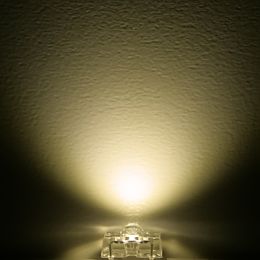In the past decade, LED technology has greatly expanded with the result being the prevalence of LED bulbs in a variety of applications. However, it has proven difficult to produce an LED bulb that can mimic the color temperature of the classic soft-white incandescent bulbs that many people prefer for home lighting. Therefore, LED bulbs have been slow to enter the home market.
A single LED diode produces blue light. Scientists have been able to apply ceramic coatings to the blue LED diodes that can absorb some of the blue light from the spectrum, while at the same time re-emitting the light at other wavelengths to produce the desired color. Several phosphor materials were synthesized to achieve this effect, but the white light left something to be desired.
Recently, researchers at the Ludwig Maximilian University located in Munich, Germany, collaborating with Amsterdam based Philips Technologie, have made a breakthrough that may allow for a more natural white color in LED diodes, which might finally allow the widespread acceptance of LED bulb in the home.
Using a process called “doping,” more frequently called “activation” when referring to semiconductor production, the scientists treat a nitride made up of Strontium, Lithium, Aluminium and Manganese, with the radioactive element Europium. The result is a phosphor that emits light in the red band of the spectrum. When applied to the LED diode, the emitted red light combines with the remaining blue light that is not absorbed, resulting in an almost pure white light. They can then make minor adjustments that allow for a more precise color control, allowing an LED bulb that can produce warm white light.
For more lighting news, follow me on twitter @doctorbulb, like me on Facebook, check out my Google+ profile, and subscribe to my blog!



